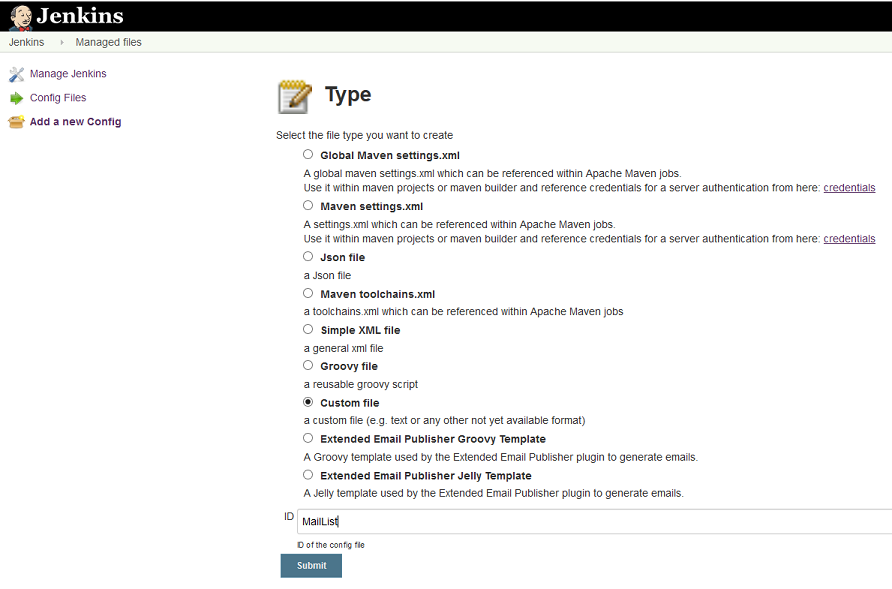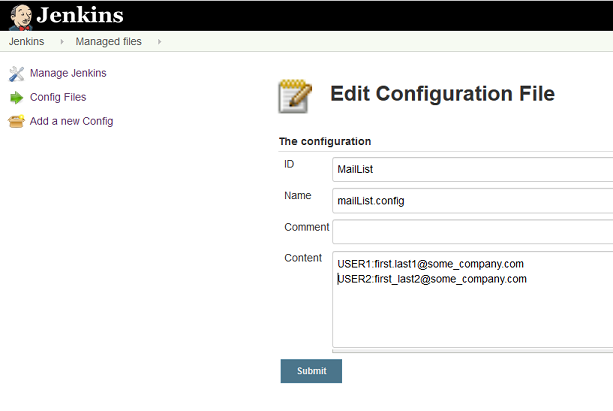The plugins installed into Jenkins used by the examples require additional setup like server locations/URLs or additional credentials to use. We describe the required steps by "location" in the Jenkins UI.
Compuware Configurations
In Manage Jenkins -> Configure System, under the heading Compuware Configurations use either the Windows or Linux path fields to point to the location of the Topaz Workbench CLI (Command Line Interface).
Use the Add Host Connection button to add new host connection definition (connection to a mainframe LPAR). Use Description for name to be used during the scripts. Use Host:port to point to the host name of the mainframe LPAR to connect to (HCI port), select the required Code page, and use CES URLto point to the CES to use.

SonarQube server information
In Manage Jenkins -> Configure System, under the heading SonarQube servers use the Add SonarQube button to add a new definition. Provide a Name to be used during the scripts, provide the URL to your SonarQube server and the SonarQube server access token for this server. Refer to your SonarQube administrator for required information.

Global Pipeline Libraries
In Manage Jenkins -> Configure System, under the heading Global Pipeline Libraries use a name for the Shared Library to refer to during pipeline definitions. Use select "Modern SCM" and the matching SCM you use for storing jenkinsfiles. The examples use GitHub and use the master branch as default branch. This can be overridden during pipeline definition.
Point to the repository used for storing jenkinsfiles and provide the Git credentials defined elsewhere.

XL Release
In Manage Jenkins -> Configure System, under the heading XL Release use the Add button to add a new definition. Use Default Server Url to point to your XL Release server, provide a Name to be used during the scripts and credentials to use for authentication.

SonarQube Scanner
In Manage Jenkins -> Global Tool Configuration, under the heading SonarQube Scanner use the Add SonarQube Scanner button to add a new definition. Use SONAR_RUNNER_HOME to point to the path to the SonarQube Scanner local to the Jenkins server and provide a Name to be used during the scripts.

Git
In Manage Jenkins -> Global Tool Configuration, under the heading Git** use the Add Git button to add a new definition. Use Path to Git executable to point to the path to the git.exe local to the Jenkins server and provide a Name.
Credentials
Use the credentials manager to store the following credentials for use in the examples
- A user ID / password token for a valid logon to the required mainframe LPAR used by plugins that do not use the CES credentials token (used as parameter
HCI_Token) - A secret text credential token to mask the CES credentials ID created and retrieved from CES (used as parameter
CES_Token) - A user ID / password token for a valid logon to the GitHub repository storing Topaz for Total Test unit test assets (used as parameter
Git_Credentials)

Managed Files
The option Manage Jenkins -> Managed Files will be available after installation of the Config File Provider plugin. The examples make use of configuration files handled and stored by this plugin. Especially this will be a list of TSO user IDs and corresponding mail addresses. Over time other configuration files will use the same technology.
In Manage Jenkins -> Managed Files select Add a new Config to add a new configuration file to be handled by this plugin. Once files are created you can select the existing files to review and modify their content.
Configuration files used in the examples are plain text files. Therefore, chose Custom file as file type when defining a new file, and provide an ID that is meaningful. The examples use MailListas ID:

After submitting specify a file name to use and start filling the file with content.
The email list
The example mail list file uses a file name of mailList.config and pairs of <TSO User ID>:<mailaddress>, each on a separate line. The TSO user IDs used in this file correspond to the ISPW owner values passed by the ISPW webhooks.

